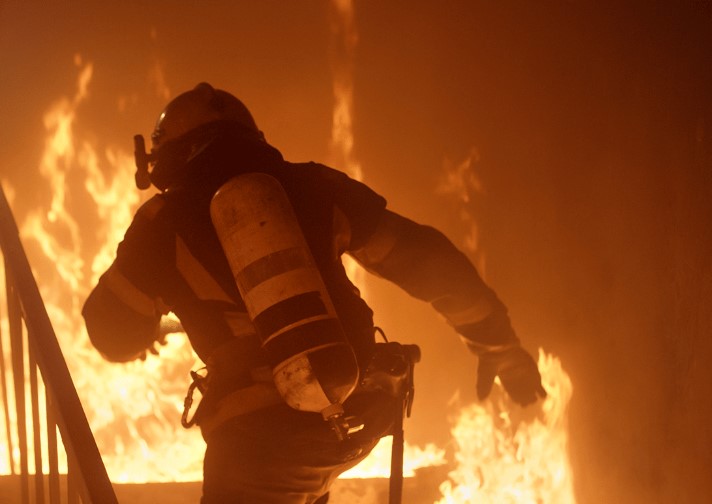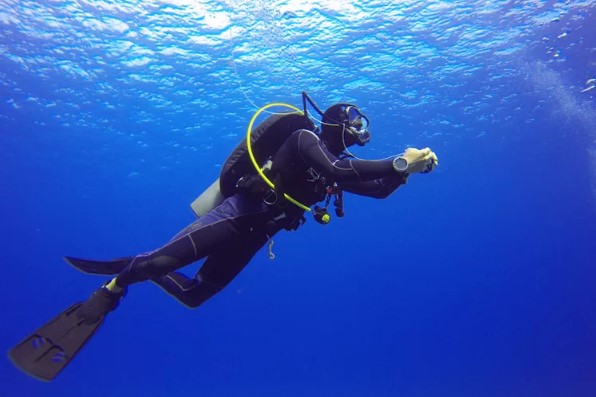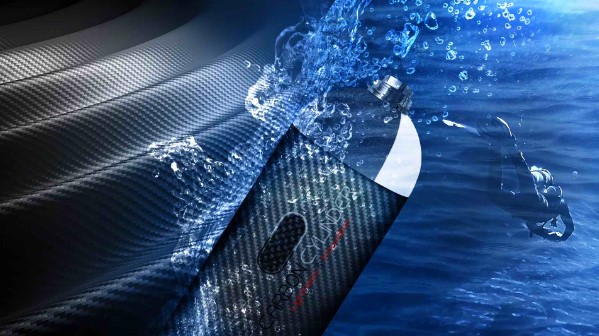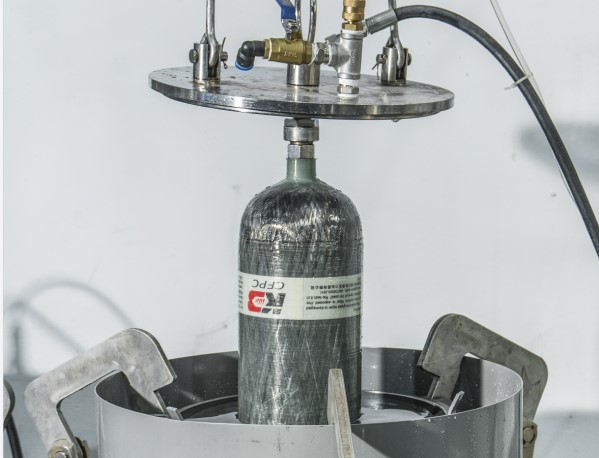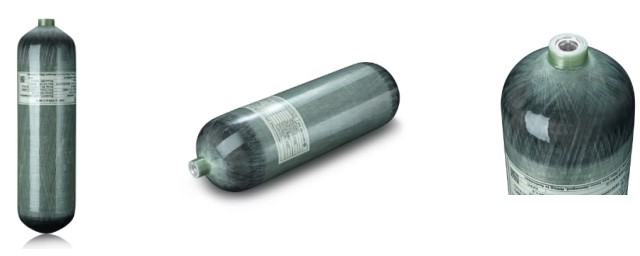When it comes to high-pressure air tanks, two of the most common types are SCBA (Self-Contained Breathing Apparatus) and SCUBA (Self-Contained Underwater Breathing Apparatus) tanks. Both serve critical purposes by providing breathable air, but their design, usage, and specifications differ significantly. Whether you’re dealing with emergency rescue operations, firefighting, or underwater diving, understanding the distinctions between these tanks is essential. This article will delve into the key differences, focusing on the role of carbon fiber composite cylinders, which have revolutionized both SCBA and SCUBA tanks.
SCBA vs. SCUBA: Basic Definitions
- SCBA (Self-Contained Breathing Apparatus): SCBA systems are primarily designed for environments where breathable air is compromised. This can include firefighters entering smoke-filled buildings, industrial workers in toxic gas environments, or emergency responders handling hazardous material spills. SCBA tanks are meant to provide clean air for a short duration, typically in above-ground situations where there is no access to breathable air.
- SCUBA (Self-Contained Underwater Breathing Apparatus): SCUBA systems, on the other hand, are specifically designed for underwater use, enabling divers to breathe while submerged. SCUBA tanks supply air or other gas mixtures that allow divers to remain underwater for extended periods.
While both types of tanks provide air, they operate in different environments and are built with varying specifications to meet the demands of their respective uses.
Material and Construction: The Role of Carbon Fiber Composite Cylinders
One of the most significant advancements in both SCBA and SCUBA tank technology is the use of carbon fiber composite cylinders. Traditional tanks were made of steel or aluminum, which, although durable, are heavy and cumbersome. Carbon fiber, with its high strength-to-weight ratio, has become a popular material choice for modern tanks.
- Weight Advantage: Carbon fiber composite cylinders are much lighter than steel or aluminum tanks. In SCBA systems, this weight reduction is particularly important. Firefighters and rescue workers often need to carry heavy gear, so reducing the weight of their breathing apparatus allows for greater mobility and reduces fatigue. SCBA tanks made from carbon fiber are up to 50% lighter than their metal counterparts, without compromising on strength or durability.In SCUBA tanks, the lightweight nature of carbon fiber also offers benefits. While underwater, weight isn’t as much of a concern, but for divers carrying tanks to and from the water or loading them onto boats, the reduced weight makes the experience much more manageable.
- Durability and Pressure Capacity: Carbon fiber composite cylinders are known for their high tensile strength, meaning they can withstand high internal pressures. SCBA tanks often need to store compressed air at pressures of up to 4,500 PSI, and carbon fiber provides the necessary structural integrity to handle such high pressures safely. This is critical in rescue or firefighting missions, where tanks are subjected to extreme conditions and any failure in the system could be life-threatening.SCUBA tanks, which typically store air at pressures between 3,000 and 3,500 PSI, also benefit from the enhanced durability that carbon fiber offers. Divers need assurance that their tanks can handle the high pressure of compressed air without risk of rupture. The multi-layer carbon fiber construction ensures safety while reducing the tank’s overall bulk.
- Longevity: The outer layers of carbon fiber composite tanks often include high-polymer coatings and other protective materials. These layers protect against environmental wear, such as moisture, chemical exposure, or physical damage. For SCBA tanks, which may be used in harsh conditions like fires or industrial accidents, this added protection is critical for extending the life of the tank.SCUBA tanks, exposed to saltwater environments, benefit from the corrosion resistance that carbon fiber and protective coatings provide. Traditional metal tanks can corrode over time due to constant exposure to water and salt, whereas carbon fiber tanks resist this type of degradation.
Function and Use in Different Environments
The environments in which SCBA and SCUBA tanks are used directly impact their design and functionality.
- SCBA Usage: SCBA tanks are typically used in above-ground or confined space scenarios where there is an immediate risk to human life from smoke, gases, or oxygen-deprived atmospheres. In these cases, the primary goal is to provide short-term access to breathable air while the user either performs rescue operations or exits the dangerous environment. SCBA tanks are often equipped with alarms that notify the wearer when air is running low, emphasizing their role as a short-term solution.
- SCUBA Usage: SCUBA tanks are designed for long-duration underwater use. Divers rely on these tanks to breathe while exploring or working in deep waters. SCUBA tanks are carefully calibrated to provide the correct mix of gases (air or special gas mixtures) to ensure safe breathing under varying depths and pressures. Unlike SCBA tanks, SCUBA tanks are designed to last for longer periods, often providing 30 to 60 minutes of air, depending on tank size and depth.
Air Supply and Duration
The air supply duration of both SCBA and SCUBA tanks varies based on the size of the tank, pressure, and the user’s breathing rate.
- SCBA Tanks: SCBA tanks are typically designed to provide around 30 to 60 minutes of air, although this time can vary based on the size of the cylinder and the user’s activity level. Firefighters, for example, may consume air more quickly during intense physical activity, reducing the duration of their air supply.
- SCUBA Tanks: SCUBA tanks, used underwater, provide air for longer durations, but the exact time depends heavily on the depth of the dive and the diver’s consumption rate. The deeper a diver goes, the more compressed the air becomes, leading to faster air consumption. A typical SCUBA dive may last between 30 minutes to an hour, depending on the size of the tank and dive conditions.
Maintenance and Inspection Requirements
Both SCBA and SCUBA tanks require regular hydrostatic testing and visual inspections to ensure safety and performance. Carbon fiber tanks are generally tested every five years, though this may vary depending on local regulations and usage. Over time, tanks may become damaged, and regular maintenance is crucial for both types of tanks to function safely in their respective environments.
- SCBA Tank Inspections: SCBA tanks, due to their use in high-risk environments, undergo frequent visual inspections and must meet strict safety standards. Damage from heat, impacts, or exposure to chemicals is common, so ensuring the integrity of the cylinder is critical.
- SCUBA Tank Inspections: SCUBA tanks must also be inspected regularly, particularly for signs of corrosion or physical damage. Given their exposure to underwater conditions, saltwater and other elements can cause wear, so proper care and regular inspections are essential for diver safety.
Conclusion
While SCBA and SCUBA tanks serve different purposes, the use of carbon fiber composite cylinders has greatly improved both types of systems. Carbon fiber offers unmatched durability, strength, and lightweight properties, making it the preferred material for high-pressure air tanks in both firefighting and diving. SCBA tanks are built for short-term air supply in hazardous, above-ground environments, while SCUBA tanks are designed for extended use underwater. Understanding the distinctions between these tanks is vital for choosing the right equipment for each unique situation, ensuring safety, efficiency, and performance.
Post time: Sep-30-2024

